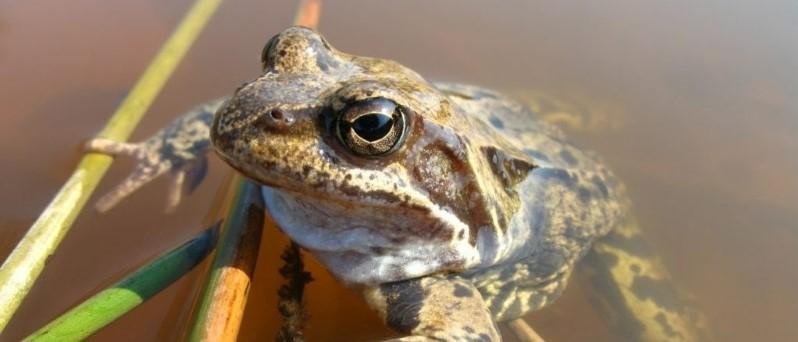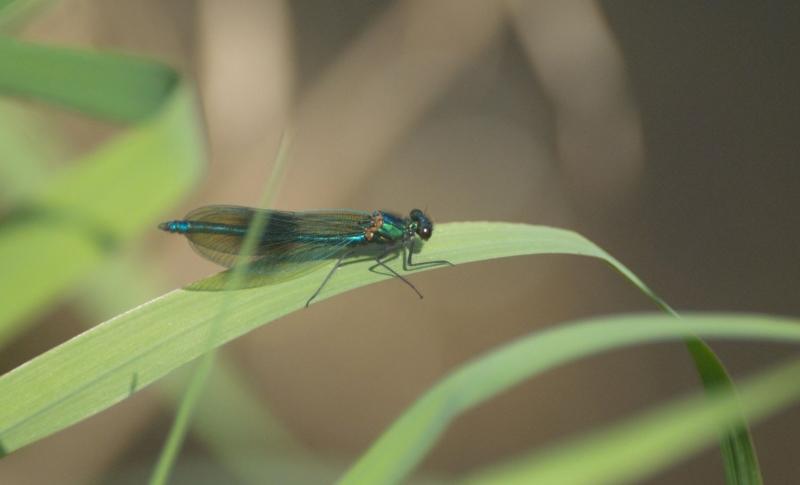
Habitat focus: Wetlands
More than just trees, the mosaic of habitats found within the Heart of England Forest encourages wildlife to thrive, with wetlands providing some of the most biodiverse habitats in the Forest.
Wetland plants
It is estimated there are around 400 wetland plants in Britain; some are happy to be completely submerged in water whilst others, such as emergent plants, like spearwort, have their roots in water but grow out of the water. These plants are important to the nymphs of dragonflies and damselflies as they emerge from the water to metamorphose.
Marginal wetland plants, such as marsh marigold, purple loosestrife, yellow flag iris and meadowsweet, are found on the edges of ponds and provide important food for aquatic and terrestrial insects.

Wetlands for wildlife
Wetland habitats found in the Forest include wet grassland/floodplain grassland, marsh, wet woodland (made up of predominantly alder and willow) and many ponds, wet ditches, streams, brooks and riverine habitats along these waterways.
With research finding that approximately two thirds of all Britain’s freshwater plants and animals are found in permanent or temporary ponds, it is not surprising that they are a UK Biodiversity Action Plan priority habitat.
A pond can be defined as a natural or man-made waterbody between 1m2 and 2ha in area and holds water for at least four months of the year. With this in mind; here in the Heart of England Forest, we estimate there are more than 50 ponds and they are wonderful places for our native wildlife. Let’s take a closer look at ponds in the Forest.
Home to invertebrates
Ponds are home to invertebrates such as dragonflies, damselflies, mayflies, snails, shrimps and water beetles, with in the region of 2,600 species found in UK ponds. Surprisingly some of the rarest bugs and beetles are found in seasonal or wooded ponds which can look uninviting to the human eye.
If a pond has 15 breeding species of dragonfly then it can be classed as exceptional. We’ve yet to record quite this many in the Forest but we have found 12 species visiting a number of our ponds. With further monitoring of these invertebrates and management of our ponds we plan to provide quality habitats for local wildlife.

Breeding habitat for amphibians
All our native frogs, toads and newts use ponds and other small waterbodies as their main breeding habitat. They may have slightly different requirements, so having a range of different ponds within the Forest will provide something suitable for all.
We are delighted that great crested newts (GCN), a European protected species, have been found in four of our ponds. They require lots of emergent vegetation to lay their eggs on but also often choose ponds which are occasionally prone to drying out. This ensures fish, which prey on newt larvae, are less likely to be present.
Toads, on the other hand, like deep ponds and don’t mind if fish are present because their tadpoles are distasteful to fish.
As adults, amphibians spend most of their time on land, but often close to their pond, which is why a mosaic of habitats within the Forest is so important. During the winter months they can be found under log piles and in leaf litter, although frogs, and occasionally newts, hibernate in the bottom of muddy ponds.
Feeding ground for birds
Mallards, moorhens and coots are common sights on larger ponds; with terns and grebes also using them to feed on fish. The muddy edges on pond margins attract waders such as snipe which use their long bills to dig out invertebrates from the mud. During the summer months swallows and house martins hunt over ponds, catching insects emerging from the water.
Mammals make use of ponds
Mammals found on our rivers and streams make use of ponds too. Water voles can find refuge from mink and otters feed on fish and amphibians. During the summer months bats, such as the Daubenton’s bat (known as the ‘water bat’) can often be found fishing insects from the pond’s surface with their large feet or tail.
Get involved with wildlife conservation
Recording and monitoring the wildlife in the Forest is vital for us to know how to protect and enhance our biodiversity. If you have an interest in amphibians, dragonflies or wetland plants then why not join us in our surveys?
If you are more into practical habitat management then you could help open up some of our ponds by clearing out bulrush and woody scrub such as hawthorn and willows. Find out more about volunteering with us.



